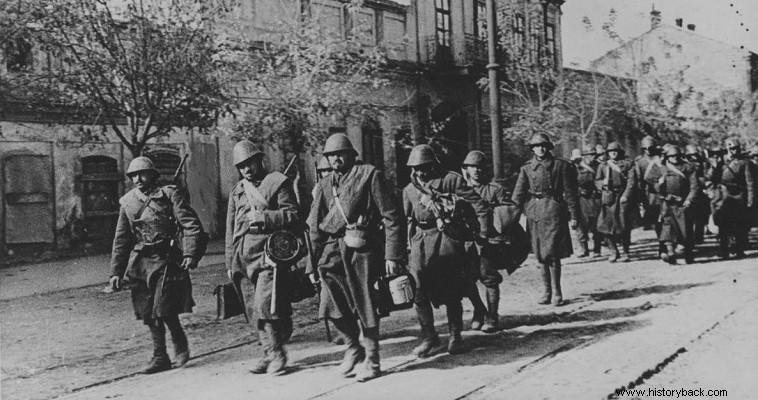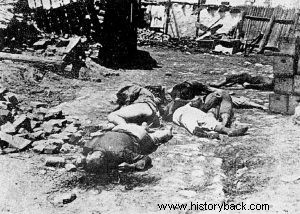
Before the German invasion of the USSR, Odessa, built between the ancient Greek cities of Tyra and Olbia, was and is one of the largest and most important cities of the Black Sea. When, after the German invasion, the city was conquered by the Romanians, about 90,000 Jews remained in it.
The Romanians captured Odessa on October 6, 1941 after two months of fighting. On October 22, 1941 a landmine left by retreating Soviet soldiers exploded at the local NKVD office (the Soviet SS), where the Romanian military commander had set up his headquarters and the staff of the Romanian 10th Infantry Division (MP).
The explosion killed 67 Romanians, including 16 officers. Among the latter was the military commander General Glokoneanou. The explosion was thought to be due to "Jewish and Communist sabotage" and so on October 23rd German SS of the infamous Einsatzgruppen and began their "project".
The few Germans, aided by the Romanian soldiers, invaded the houses of the city shooting or literally hanging anyone they found in front of them, regardless of sex, age or religion. Over 100 people were executed in the city's Great Fountain.
Another 200 were hanged in the suburb of Slobodka, 251 in Moldavanka, 400 were hanged in Aleksandrovsky, while thousands more were locked in warehouses and burned alive. After the war, mass graves were found with over 22,000 bodies. The next day, 5,000 Jews gathered in the village of Danlic. The first were murdered by the men of the Romanian 10th Machine Gun Battalion under Lt. Col. Deleanu. The rest were locked up in four large warehouses, which the Romanians had doused with gasoline. The prisoners were burned alive.
Those who did not fit were murdered the next day in front of the apocaides. Some Jews were let go, but all their possessions were confiscated. Within the first week of Romanian occupation, Odessa had lost 10% of its population. But the crime did not stop there. The Romanians created their own Jewish concentration camp in Bogdanovka where 55,000 people were gathered. All of them were murdered between December 20, 1941 and January 15, 1942 by Romanians, Germans and Ukrainians.
Another 40,000 or so Jews were locked up in the ghetto created in the Odessa suburb of Slobodka. There the mortality was so great that by February almost half of the inmates had died of hunger and cold. Those who survived were taken elsewhere. Many died in transit, even more were murdered by the Romanians and Germans. Many few escaped. Of the Romanian murderers, two generals were sentenced to death after the war, but the sentence of one was commuted to life.

